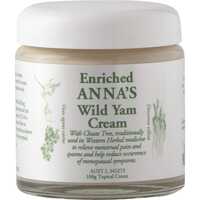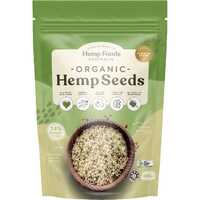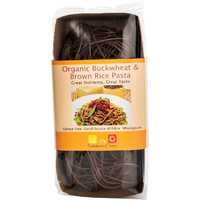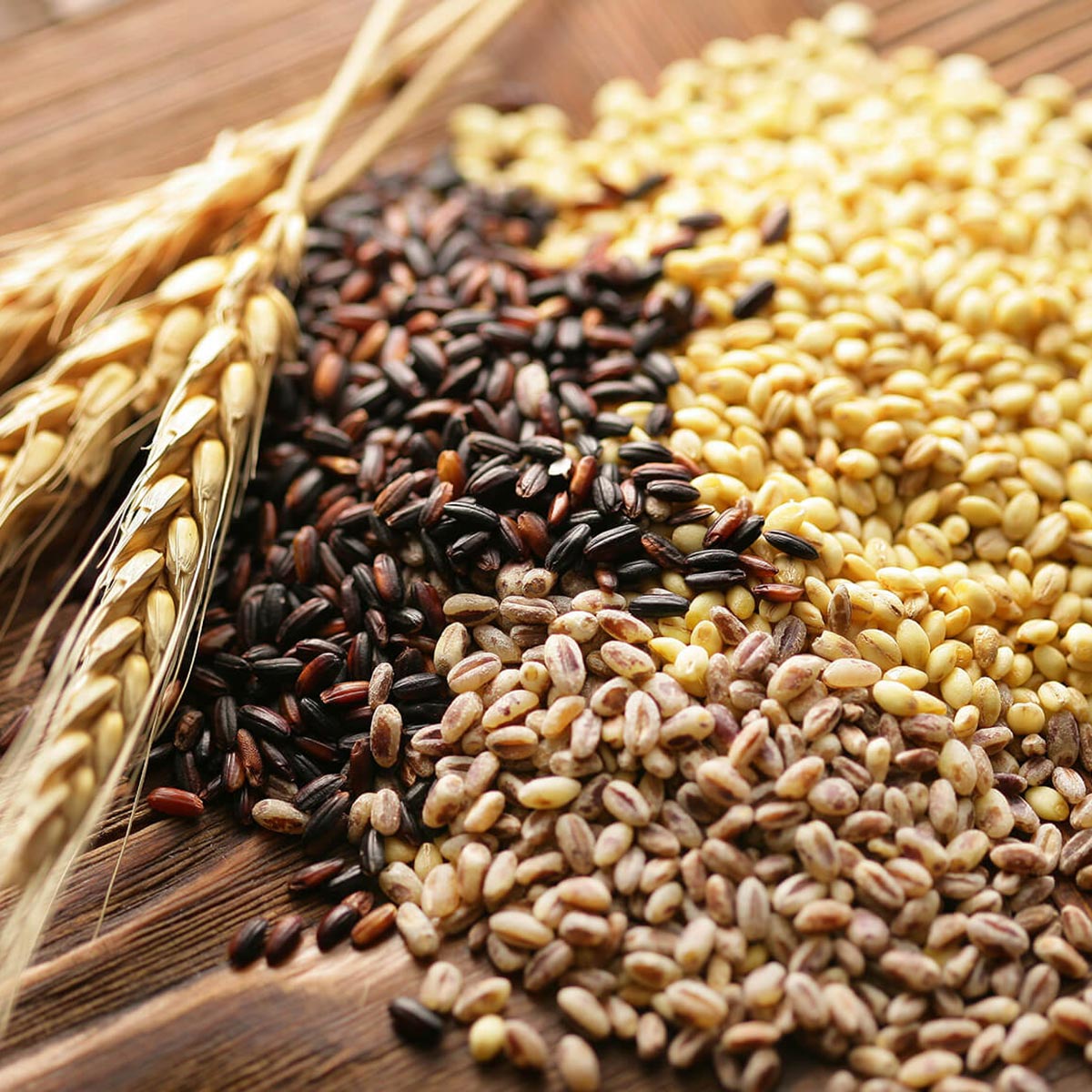Certain foods have always played a vital role in human civilisation. Cereals are one example, as this ubiquitous food group has been enjoyed across the world for thousands of years. Cereals are produced in greater quantities than any other food crop, and they provide more energy worldwide than any other type of food. From common cereals like wheat and oats to pseudo-cereals like quinoa and chia, the cereals of the world are essential to our survival and integral to our well-being.
Let's take a deep dive into the wonderful world of cereals, including their long history, nutritional profile, and various health benefits.
What are Cereals?
Cereal is a grass material cultivated for its edible grain. Grains include an endosperm, germ, and bran, which are included in whole-grain cereal products. In their pure unprocessed form, cereals are a rich source of nutrition, including vitamins, minerals, proteins, carbohydrates, fats, and oils. However, many kinds of cereal are processed, which strips away the bran and germ content while leaving the endosperm in place. While this part of the grass is edible and capable of providing energy, it consists mostly of carbohydrates.
Cereals are responsible for daily sustenance in many developing nations and play a vital role across the developed world. However, in western civilisation, the word "cereal" is also used to describe commercial food products consisting mostly of edible grasses. In this context, distinctions must be made between cereals, muesli, and granola blends.
- Cereal is an inclusive term used to describe all edible grasses and edible grains from other plant families.
- Muesli is an oat-based cereal blend that may also include nuts, dried fruit, seeds, and other edible grains.
- Granola is made from the same ingredients as muesli but includes oils and sweeteners to create crunchy clusters.
Cereals vs Pseudo-Cereals
Along with recognising cereal, muesli, and granola products, it's important to understand the differences between true cereals and pseudo-cereals. As mentioned above, a true cereal is a grain or edible component of grass. In contrast, a pseudo-cereal is an edible grain from a non-grass plant family, such as buckwheat, quinoa, and chia. Pseudo-cereals have become popular over recent years, with some of these products offering greater nutritional benefits than traditional cereals.
History of Cereal Consumption
The history of cereal consumption is closely tied to the development of humanity. Modern civilisations rose from primitive origins on the back of agricultural practices, with cereal grains some of the first foods grown in a controlled manner. Moreover, the birth of agriculture was largely responsible for rising populations and cities' development, which directly affected the organisation of political power and the growth of capitalist societies.
There is evidence of cereals being harvested very early in human history. For example, neolithic villages in Syria used wheat and barley around 9,000 years ago, and ancient Chinese people consumed millet around the same time. Around 8,000 years ago, the first cereal grains were domesticated, with wheat and barley forming the basis of modern-day agriculture in the Fertile Crescent region. Around the same time, sorghum and millet were being farmed in sub-Saharan West Africa.
Cereal production has always been linked to political power on the world stage, with access to cereals determining military mobilisation, international trade, and industrial growth. According to one theory, the Industrial Revolution shrinks in importance compared to the Agricultural Revolution, with access to cereals determining the percentage of human resources available to heavy industry and other non-agricultural sectors. Cereal production has changed somewhat over the centuries, with modern grains more likely to be heavily processed and nutritionally compromised.
The Nutritional Profile of Cereals
The word "cereal" is an umbrella term, making nutrition content difficult to measure. Saying that, however, some common factors link all cereal products together. All cereals contain high amounts of carbohydrates, along with fibre, protein, and certain micronutrients like vitamin E, some B vitamins, magnesium, and zinc.
To understand the nutritional advantages of cereals, you need to distinguish between whole grains and refined grains.
Whole grains vs refined grains
Cereal grains are often described as either whole grains or refined grains. However, as the quality of cereal crops diminishes around the world and processed foods become more widespread, it's important to distinguish between these categories.
- Whole grains are either unprocessed or minimally processed. They contain all parts of the grain, including the bran, germ, and endosperm. While the bran and germ make up 15% of the total grain content, they include most of the good stuff. The bran contains most of the fibre and B vitamins, and the germ contains most of the oils, vitamins, proteins, minerals, and antioxidants. According to studies, consuming whole grains offers a variety of health advantages.
- Refined grains, also known as processed grains, only contain the endosperm. While the endosperm makes up 85% of most grains, it's the least beneficial from a nutritional perspective. However, refined grains have a longer shelf life than whole grains, making them valuable commercially. Unfortunately, while processed grains can be a great source of carbohydrates and some proteins, they do not provide the same well-rounded benefits as whole grains.
Popular Cereals and Health Benefits
High-quality modern cereals, including non-processed whole-grain products and pseudo-cereals with rich nutrient profiles, are widely available. Let's look at the world's most beloved cereals, including true cereals like wheat and rice and pseudo-cereals like chia and quinoa.
True Cereals
There are only a few true cereals, all of which are members of the Poaceae grass family. True cereals include wheat, rice, oats, rye, barley, and corn. Wheat and rice are the most important crops in the world, and they account for over half the world's cereal production.
Wheat
The most popular versions of wheat are durum wheat and common wheat, the latter of which accounts for 80% of global production. Whole wheat offers the most nutrition, with the crunchy outer husk left on to provide a crunchy exterior and chewy centre. In addition, wheat is high in gluten and folic acid, which is an important prenatal vitamin.
Rice
Domesticated rice is the most widely consumed food staple in the world. There are multiple variations of rice on the market, including brown rice, wild rice, and processed white rice. Once the rice is harvested, the bran and germ layers are left intact as brown rice or removed as white rice. Brown rice is a great source of fibre, protein, magnesium, potassium, iron, selenium, manganese, zinc, and B vitamins.
Oats
Oats are one of the few common grains usually sold in their whole form. Rolled oats are steamed and flattened, and steel-cut oats have been cracked to enable faster cooking. This much-loved cereal can help lower blood cholesterol levels and provide a great source of protein, calcium, iron, vitamin B1, and niacin.
Rye
The endosperm and bran components of rye are a great source of dietary fibre. Whole-grain rye has a lower glycemic index than wheat, and due to its high gluten content, it can be used to produce many of the same foods. If you want to benefit from the protein, B vitamins, and potassium content of whole-grain rye, look out for whole rye or rye berry products.
Barley
Barley has a long history of human consumption, and it's just as popular today as it's ever been. Barley is high in carbohydrates and low in gluten, which makes it ideal for porridge and flatbreads. Pearled barley does not include the bran, with whole-grain barley typically sold as either whole barley or hulled barley. Barley has a rich nutty flavour that works great in soups and stews.
Corn
Also known as maise, corn has a rich oily germ and fairly neutral taste. While whole grain corn spoils fairly easily, nutrient-rich maise products are available from some places. It's important to store whole grain cornmeal products in the fridge or freezer to stop them from going off. Whole-grain cornmeal is rich in antioxidants and works great in polenta, pancakes, and cornbread.
Pseudo-cereals
Pseudo-cereals have a different nutritional profile than true cereals, including a different composition of proteins, vitamins, and minerals. With a much richer nutrient profile and ideal amino acid balance, these products offer benefits not available in other cereals.
Buckwheat
Buckwheat is in the Polygonaceae family, with this pseudo-cereal loved for its taste and nutritional benefits. Buckwheat kasha is sold as an alternative to rice and potatoes, and buckwheat flour is used in pancake mixes, bread, and soba noodles. Buckwheat has a healthy balance of carbohydrates, proteins, and fibre and high levels of amino acid lysine.
Amaranth
Amaranth is in the Amaranthaceae family. In South America, ground amaranth is often mixed with honey and shaped into figures for religious ceremonies. Unlike other cereals, amaranth leaves can also be used as a vegetable. Amaranth is a good source of phosphorus, magnesium, manganese, iron, vitamin B6, vitamin B5, folate, and zinc.
Quinoa
Despite its recent popularity, quinoa is an ancient grain in the amaranth family. While it's not a true cereal, it provides a fantastic source of protein, fibre, and minerals such as iron and magnesium. In addition, quinoa has a unique nutty flavour, which makes it ideal for cereal blends and porridge or savoury recipes such as stews and stuffed bell peppers.
Chia
Chia seeds are not a true grain, as they come from a plant in the mint family. However, chia seeds are often prepared and consumed as cereal due to their small form. In addition, chia is often seen in smoothies and other drinks, including protein shakes and commercially bottled beverages. Chia seeds are rich in fibre like other cereals and minerals, fats, antioxidants, and healthy omega-3 fats.
Healthy Being offers a great selection of true whole-grain cereals and nutritionally-rich pseudo-cereals. From everyday groceries to powerful supplements and superfood powders, we have everything you need to supercharge your health. Browse our website today or contact our friendly team for nutritional advice!


 Certified Organic
Certified Organic Vegan Friendly
Vegan Friendly  Vegetarian
Vegetarian Organic Ingredients
Organic Ingredients Dairy Free
Dairy Free Gluten Free
Gluten Free Keto Friendly
Keto Friendly






























